Содержание
- 2. Platform Architecture Applications development overview Main concepts and components Framework review New features of Android platform
- 3. Platform Architecture
- 4. Architecture Linux kernel Native libraries Runtime environment Application framework Applications
- 5. System Architecture
- 7. Linux Kernel 2.6/3.4 Open source Improved memory manager Own process and threads management Proven driver model
- 8. Native Libraries Bionic (Libc) Function libraries Native servers Hardware Abstraction Layer (HAL)
- 9. Hardware Abstraction Layer User space C/C++ library layer Defines the interface that Android hardware “drivers” have
- 10. Android Runtime Android has own implementation of VM (Dalvik) Provides application portability and runtime consistency Runs
- 11. Core Libraries Core API of Java5 provides a powerful, simple and familiar development platform Data structures
- 12. Application Framework Core platform functionality Activity Manager, Package Manager, Window Manager, Resource Manager Content Providers View
- 13. Applications The Android platform has a variety of Java applications Home - displays applications shortcuts, widgets,
- 14. Applications development overview
- 15. Applications Environment Eclipse and Ant Projects Project Structure JIT. Basic information Debugging (Eclipse Memory Analyzer)
- 16. Environment JDK5 or JDK6 http://www.oracle.com/technetwork/java/javase/downloads/index.html Android SDK http://developer.android.com/sdk/index.html Eclipse IDE 3.4 or higher http://www.eclipse.org/downloads Android development
- 17. Installing procedure Get and install JDK5/6 Get and install the ADT bundle (Eclipse+ADT) Alternative – get
- 18. Eclipse Project
- 19. Ant project Android/android-sdk/tools/android.bat android.bat create project --target 14 --name ExampleApplication --path ./ExampleApplication --activity MainActivity --package com.myexample.exampleapplication
- 20. Project Structure TestApplication/src/com/myexample/exampleapplication/MainActivity.java The main Activity of the project TestApplication/gen/com/myexample/exampleapplication/R.java The project dynamically generated resource file
- 21. Project Structure (contd.) TestApplication/res/drawable-*dpi/ic_launcher.jpg The project images TestApplication/res/layout/main.xml The main activity UI layout TestApplication/res/values/strings.xml The project
- 22. MainActivity.java package com.myexample.exampleapplication; import android.os.Bundle; import android.app.Activity; import android.view.Menu; public class MainActivity extends Activity { @Override
- 23. R.java /* AUTO-GENERATED FILE. DO NOT MODIFY. */ package com.myexample.exampleapplication; public final class R { public
- 24. ./Android-xx/Android.jar Provides: J2SE5 classes Android-specific classes 3-rd party classes Can’t be extended by application developer
- 25. AndroidManifest.xml Is XML file that is required file for every application Lists all of the components
- 26. AndroidManifest.xml package="com.myexample.exampleapplication" android:versionCode="1“ android:versionName="1.0" > android:allowBackup="true“ android:icon="@drawable/ic_launcher" android:label="@string/app_name“ android:theme="@style/AppTheme" > android:name="com.myexample.exampleapplication.MainActivity" android:label="@string/app_name" >
- 27. Project resources ./res/drawable/ should contain drawable resources like images The name of resource IDs are defined
- 28. ./res/layout/main.xml android:layout_width="match_parent" android:layout_height="match_parent" android:paddingBottom="@dimen/activity_vertical_margin" android:paddingLeft="@dimen/activity_horizontal_margin" android:paddingRight="@dimen/activity_horizontal_margin" android:paddingTop="@dimen/activity_vertical_margin" > android:layout_width="wrap_content" android:layout_height="wrap_content" android:text="@string/hello_world" />
- 29. ./res/values/strings.xml Describes text resources Typically contains string values ExampleApplication Settings Hello world!
- 30. Debugging Android Debug Bridge (ADB) Dalvik Debug Monitor Server (DDMS) Logcat Traceview Eclipse Memory Analyzer
- 31. Debugging: ADB Device management adb devices adb connect 192.168.1.10 Adb disconnect 192.168.1.10 Moving files and directories
- 32. Debugging: DDMS Thread and heap information Process information SMS and incoming calls spoofing Location data spoofing
- 33. Debugging: DDMS
- 34. Debugging: Logcat Logs device messages adb logcat DDMS – Device/Run LogCat menu Eclipse – Window/Show view/LogCat
- 35. Debugging: Traceview Graphical tool to view application traces Trace file .trace is used as input traceview.bat
- 36. Debugging: Traceview
- 37. Debugging: Eclipse Memory Analyzer Install from http://download.eclipse.org/mat/1.3/update-site/. What it can do: Get a heap dump Find
- 38. Practice (Slides 1-7 from ContentProvider_UI_Adapter presentation)
- 39. Main concepts and components Basics of application development Thread interaction mechanisms Data storages UI building blocks
- 40. Main concepts and components Basics of Application Development
- 41. Basics of application development Activities Tasks and Back Stack Intents Services Broadcast Receivers Content Providers Applications
- 42. Single focused thing which can interact with user Each activity is independent of the others Takes
- 43. Activities public class TestActivity extends Activity { /** Called when the activity is first created. */
- 44. Tasks and Back Stack Task is a collection of activities user interacts with when performing a
- 45. Intents A passive data structure holding an abstract description of an operation to be performed May
- 46. Intents startActivity(new Intent( android.content.Intent.ACTION_DIAL, null )); startActivity(new Intent( android.content.Intent.ACTION_SET_WALLPAPER, null )); startActivity(new Intent( android.content.Intent.ACTION_VIEW, Uri.parse(“http://google.com”) ));
- 47. Intents System defines receiving component depending on the contents of Intent object, so intents are divided
- 48. Intents (contd.) Explicit intents Implicit intents /* Explicit intents example */ Intent intent = new Intent(getContext(),
- 49. Services
- 50. Services Application component without UI Extends android.app.Service By default runs in the same process as the
- 51. Services Have distinctive life-cycle states. Can start multiple times, but stop just once Can connect with
- 52. Broadcast Receivers Component designed to respond to broadcast Intents Implementing an Broadcast Receiver involves: Extending android.content.BroadcastReceiver
- 53. Content Providers and Content Resolvers Application components which are intended to support data sharing model Content
- 54. Content Providers All content is represented by URIs Convenience methods mean clients don’t need to know
- 55. Applications android.app.Application maintains global application state Can be provided non-system implementation in AndroidManifest.xml for tag android:icon
- 56. Security Permissions Signing Applications
- 57. Basic Security Regulations Each Android application runs in its own process Security is enforced at the
- 58. Permissions Basic application has no permissions thus it can’t do anything that would adversely impact the
- 59. Permissions Permission may be enforced at a number of places during program's operation: At the time
- 60. Signing Applications All Android applications (.apk files) must be signed with a certificate The certificate identifies
- 61. Main concepts and components Thread interaction mechanisms
- 62. Platform helper classes Handler, Looper, Message Queue Messenger Parcelable classes, Bundle AsyncTask
- 63. Handlers mechanism Handler is an instrument to drop a message on the queue attached to the
- 64. Messenger When you need to perform IPC between service and client, using a Messenger for your
- 65. Parcelable Is similar to Serializable, but faster Allows data to be transferred between different processes/threads Your
- 66. AsyncTask Separates processing of long-term operations of the results representation on thread level Runs only once
- 67. AsyncTask Member fields of AsyncTask subclass can be set inside its constructor, onPreExecute() and doInBackground() methods.
- 68. Practice (Complete MediaPlayer exercises)
- 69. Main concepts and components Data Storages
- 70. Data Storages Preferences A lightweight mechanism to store and retrieve key/value pairs of primitive data types
- 71. Data Storages: Preferences Context.getSharedPreferences() to share them with other components in the same application Activity.getPreferences() to
- 72. Data Storages: Preferences Using SharedPreferences settings = context.getSharedPreferences(“prefs”, 0); boolean vMode = settings.getBoolean(“viewMode”, false); --------------------------------------------------------------------------- SharedPreferences
- 73. Data Storages: Files Android provides an access to the file system and files Standard Java API:
- 74. Data Storages: Files Using try { final String TESTSTRING = new String(“Hello Android”); FileOutputStream fOut =
- 75. Data Storages: Files Using try { final String TESTSTRING = new String(“Hello Android”); char[] inputBuffer =
- 76. Data Storages: Data Bases Android provides an access to SQLite-based DBs Platform specific API android.database.sqlite.* is
- 77. Data Storages: Data Bases Using private static class DatabaseHelper extends SQLiteOpenHelper { DatabaseHelper(Context context) { super(context,
- 78. Data Storages: Content Providers This is the only way to share data across applications Android already
- 79. Data Storages: Content Providers ContentResolver provides access to ContentProvider by URI URI is defined by RFC
- 80. Content Providers vs. SQL requests Storing your data in a database is one good way to
- 81. Data Storages: Content Providers Using // data query String[] projection = new String[] { “_id”, “name”,
- 82. Data Storages: Content Providers Using // data update ContentValues values = new ContentValues(); values.put(“name”, “David”); Uri
- 83. Data Storages: Content Providers Using // data insert ContentValues values = new ContentValues(); values.put(“name”, “David”); Uri
- 84. Data Storages: Content Providers Using // data delete Uri mContacts = Uri.parse(“content://contacts/people”); int rows = getContentResolver().delete(mContacts,
- 85. Data Storages: Assets Assets behave like a file system, they can be listed, iterated over. Assets
- 86. Data Storages: Copy and Paste Provides functionality for copy and paste operations within and between Android
- 87. Practice (Complete the ContentProvider_UI_Adapter presentation)
- 88. Main concepts and components User Interface
- 89. User Interface Visual Editors UI Components (typical UI widgets attributes. Merging and including UI xml) App
- 90. Visual Editors DroidDraw is the interactive UI designer
- 91. Visual Editors Eclipse ADT embedded UI designer
- 92. UI Components View and Widgets Fragments ViewGroup and Layouts AdapterView Floating dialogs Menus Notifications Custom components
- 93. UI Components: View And Widgets android.view.View objects are the basic units of UI expression on the
- 94. UI Components: Widgets
- 95. Fragments What’s the matter? Complex Activity code for heavy-weight UI Handling identical piece of UI code
- 96. Fragments cont. onAttach() is called once Fragment is attached to its Activity onCreateView() defines what View
- 97. Fragments cont. XML definition android:id="@+id/foo_fragment" android:name="com.foo.FooFragment" android:layout_width="match_parent" android:layout_height="wrap_content" /> Java definition FooFragment foo = Fragment.instantiate(context, "com.foo.FooFragment");
- 98. Fragments cont. Inserted Fragments. In general it works. This feature is NOT supported using XML and
- 99. Practice (Complete the Fragmets_adb_sqlite3 presentation)
- 100. UI Components: ViewGroup Special view that can contain other views (children) The view group is the
- 101. UI Components: Layout Layout is based on ViewGroup Layout defines a position and parameters of children
- 102. UI Components: Layout
- 103. UI Components: AdapterView AdapterView is a view whose children are determined by an Adapter class Adapter
- 104. UI Components: AdapterView
- 105. UI Components: Floating Dialogs Small window that appears in front of the current Activity Activity loses
- 106. UI Components: Floating Dialogs
- 107. UI Components: Menu Part of any application to reveal its functions and settings Android offers an
- 108. UI Components: Options Menu Is opened by MENU button Displays no more than the first six
- 109. UI Components: Context Menu Conceptually, it is similar to “right-click” PC menu Is displayed by “long-click”
- 110. UI Components: Submenu Submenus are added for organizing topics and including extra menu functionality A submenu
- 111. UI Components: Notifications Notification tasks can be achieved using a different technique: Toast Notification – brief
- 112. UI Components: Toast Notifications A message that pops up on the window surface Fills only the
- 113. UI Components: Status Bar Notifications Adds an icon to the system status bar and an expanded
- 114. UI Components: Status Bar Notifications When the expanded message is selected, Android fires an Intent that
- 115. UI Components: Custom Components Custom widget based on View class Extend existing widget such as TextView,
- 116. App Widgets Miniature application views that can be embedded in other applications and receive periodic updates
- 117. Live Wallpapers Interactive backgrounds on the home screens Similar to a normal Android application and has
- 118. Drawing The Canvas class provides the "draw" calls To draw something, you need 4 basic components:
- 119. Domain-specific items
- 120. Framework Review Network Telephony Media framework (media player, jet player, camera, NFC) Web applications development (V8
- 121. Network java.net Standard Java5 network API android.net Network state DHCP information UNIX sockets Android proxy settings
- 122. Telephony Stack Applications Framework Libraries Linux Kernel Communication Processor Phone 3-rd party telephony app Telephony manager
- 123. Telephony Stack Phone – platform application to make calls Telephony Manager – provides a telephony API
- 124. Media framework Media player Jet player Camera NFC (Near Field Communication)
- 125. Web applications development You can make your web content available to users in two ways: in
- 126. Web applications development (contd.) If JavaScript is planned to use, enable it Binding JavaScript code to
- 127. Web applications development (contd.) Navigate Web page history using goForward() and goBack() You can debug your
- 128. Working with sensors The Android platform supports three categories of sensors: Motion sensors Environmental sensors Position
- 129. Location Two frameworks can be used: Android framework location APIs (android.location package) Google Location Services API
- 130. 3-rd Party Components Apache HTTP Client – powerful HTTP client connections JUnit – Java testing framework
- 131. ANDROID NDK
- 132. NDK setup On Win PC be sure Cygwin is properly installed Download an archive from http://developer.android.com/tools/sdk/ndk/index.html
- 133. Android app with native code Create an empty Eclipse project (Android app) Create wrapper-class CalcWrapper.java Load
- 134. Android app with native code Compile NDK project (libcalc-jni.so) Create new folder $YOUR_PROJECT/libs/armeabi inside Put *.so
- 135. Pure native apps http://developer.android.com/reference/android/app/NativeActivity.html Sample code is in $NDK/samples/native-activity AndroidManifest.xml should contain: android:value="native-activity" /> native-activity here
- 136. 9 patch editor Useful editor based off Android SDK http://weblookandfeel.com/downloads/ninepatch-demo.jar
- 137. OpenGL ES open source engines AndEngine Lightweight and powerful Java engine with loadable extensions Supports OpenGL
- 138. System Services Getting of the system services is made by name using Context.getSystemService(String name) There are
- 139. System Services. LocationManager. It’s used for accessing to the system location services Add permissions ACCESS_COARSE_LOCATION and/or
- 140. System services. LocationManager. Get system service and location updates listener LocationManager lm = getSystemService(Context.LOCATION_SERVICE); InternalLocationListener mListener
- 141. Features
- 142. Fragments Loaders Calendar API Rich UI Components Google Cloud Messaging Support Library
- 143. Loaders Async data loading for Activities/Fragments. Introduced since 3.0+ (API11) and Support Library 4+ Monitor data
- 144. Loaders usage Get LoaderManager Activity.getLoaderManager() Init Loader LoaderManager.initLoader(int id, Bundle args, LoaderCallbacks callback) Implement LoaderCallbacks onCreateLoader(int
- 145. Calendar API Allows you to perform query, insert, update, and delete operations on calendars, events, attendees,
- 146. Rich UI::Action Bar Action Bar was introduced since 3.0+ (API11) Action Bar is a replacement of
- 147. Rich UI::Action Bar AndroidManifest.xml android:minSdkVersion="8" android:targetSdkVersion="17" /> ...
- 148. Rich UI::Action Bar:compatibility mode AndroidManifest.xml - Define SDK version as 10. android:minSdkVersion="10" android:targetSdkVersion="10" /> - Defile
- 149. Google Cloud Messaging (GCM) Sends messages from your server to your Android clients. Gets client messages
- 150. GCM cont. Register your project at Google Console Enable GCM Obtain an API key
- 151. GCM client Check Google API availability GooglePlayServicesUtil.isGooglePlayServicesAvailable(Context) Register your app GoogleCloudMessaging gcm; . . . gcm.register("YOUR-SENDER-ID");
- 152. GCM 3rd party server GCM supports HTTP and CCS connection servers Message streaming HTTP supports only
- 153. Support library Practically, some of useful and popular API introduced in 3.0+ and 4.0+ platforms are
- 154. 3-rd party SDKs Keep in mind a license type!!!
- 155. Volley Framework UI SDKs Action Bar Sherlock Sliding Menu
- 156. Volley Framework Created to solve two main every day goals Net requests/responses execution and caching. Basically
- 157. UI SDK::Action Bar Sherlock Developed to provide a modern and rich Action Bar functionality for platforms
- 158. Known Android issues
- 159. Apps starting Persistent Notifications
- 160. Apps starting Security policy was significantly changed since 3.1+ (API12) Apps can’t be started automatically by
- 161. Persistent Notifications Since 4.3+ (API18) a persistent notification is shown in Notification bar for all services
- 162. Practice (Complete the Android 4.x LocationApp presentation)
- 163. Q&A
- 164. Sources http://www.openhandsetalliance.com http://developer.android.com http://source.android.com Architecture http://developer.android.com/guide/index.html http://kernel.org http://sites.google.com/site/io/dalvik-vm-internals Applications Application Components http://developer.android.com/guide/topics/fundamentals.html
- 165. Sources User Interface http://droiddraw.org Data Storages http://developer.android.com/guide/topics/providers/content-providers.html Framework Review http://hc.apache.org/httpcomponents-client http://junit.org http://www.json.org http://www.xmlpull.org
- 167. Скачать презентацию















































































![Data Storages: Content Providers Using // data query String[] projection](/_ipx/f_webp&q_80&fit_contain&s_1440x1080/imagesDir/jpg/100028/slide-80.jpg)





























































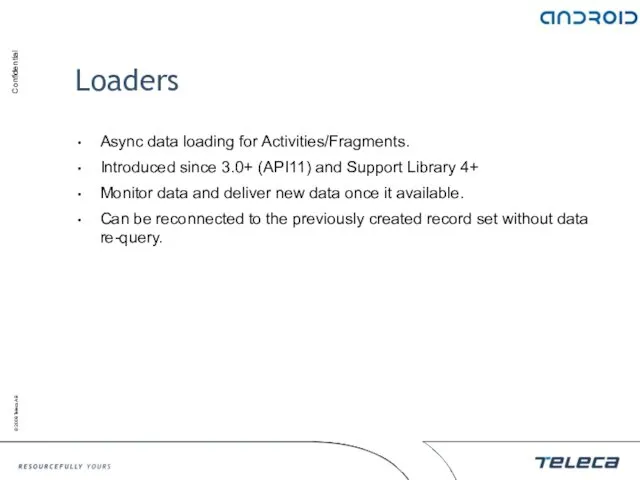
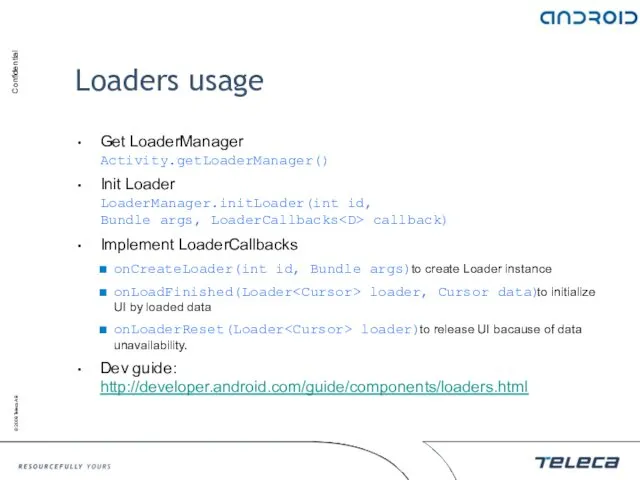

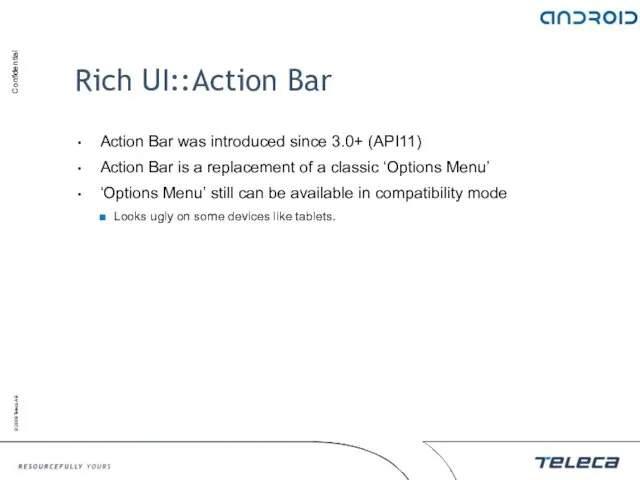
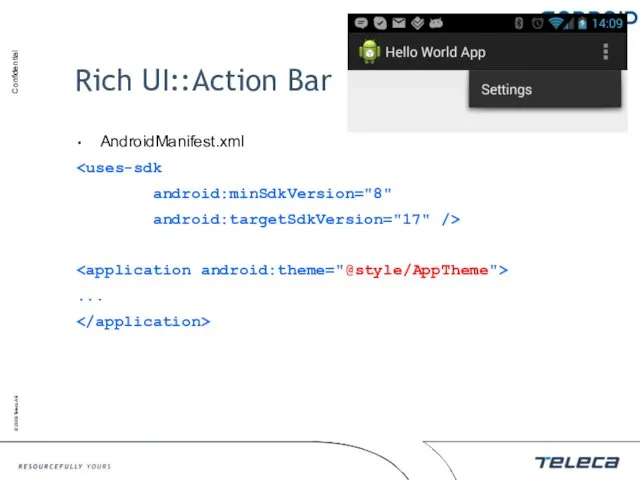
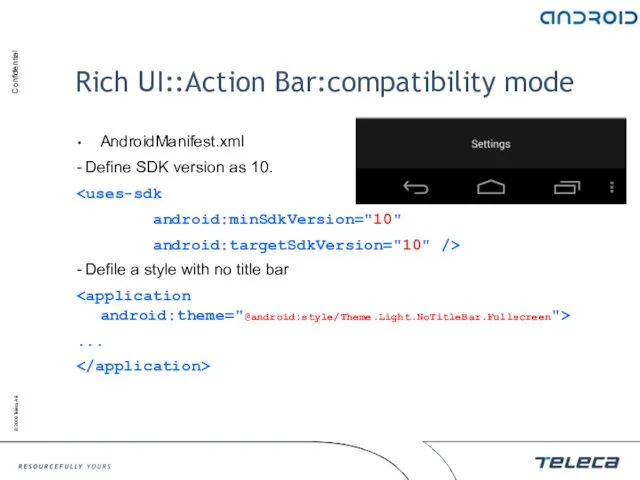
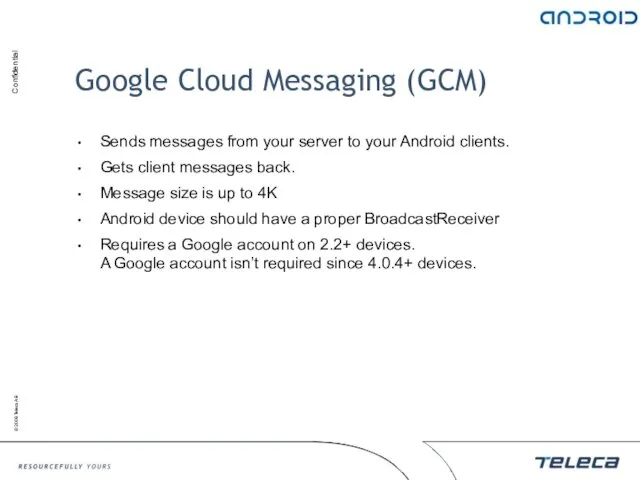
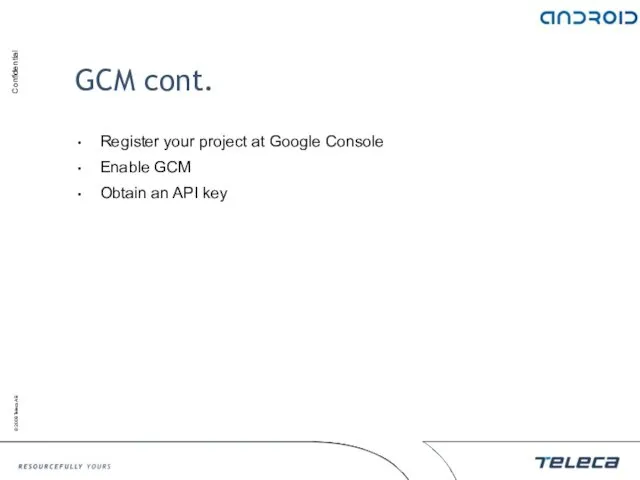
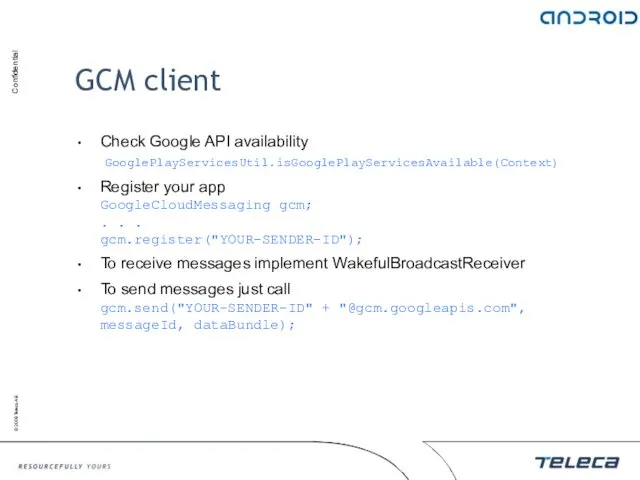
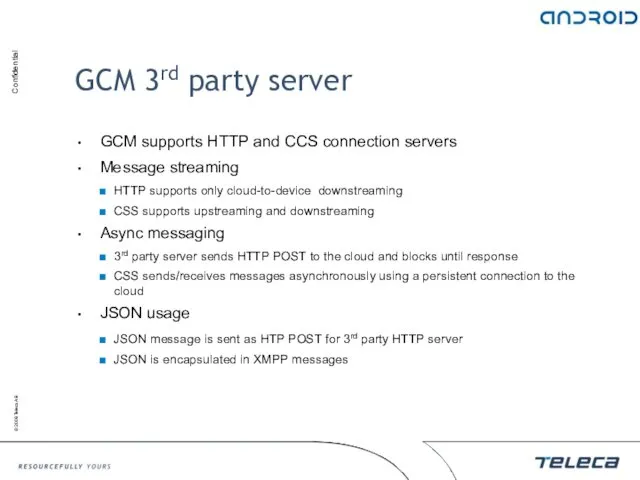
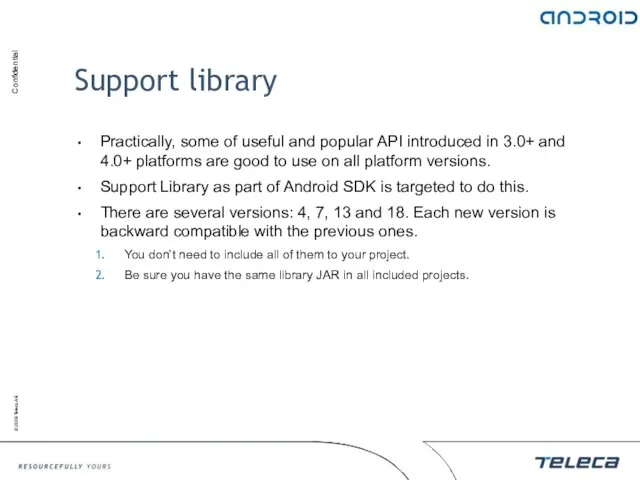
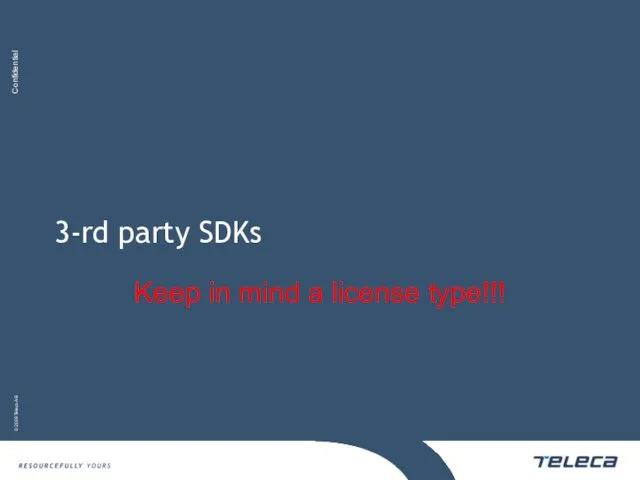
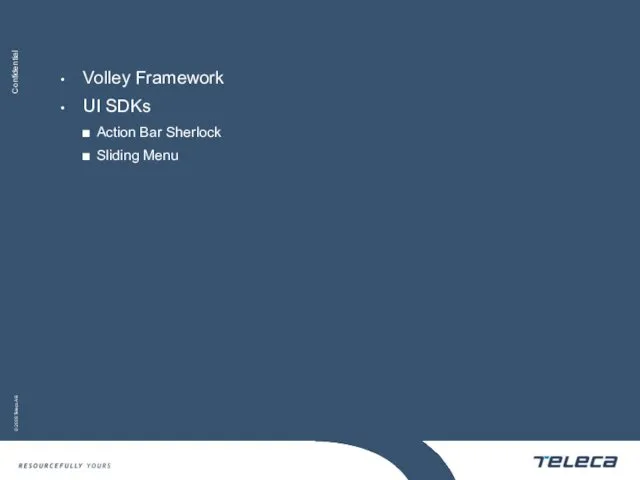
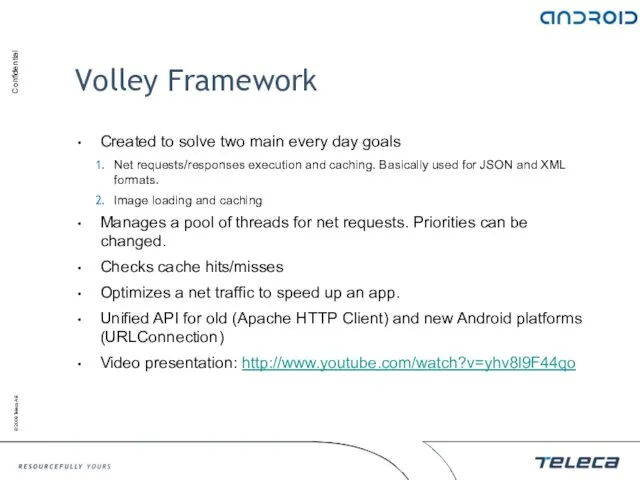
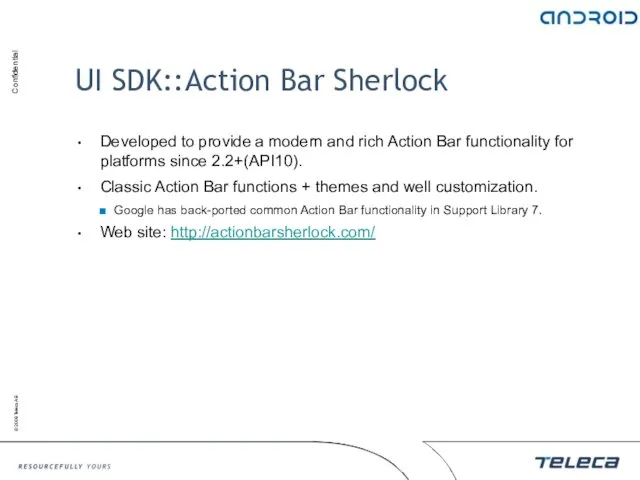
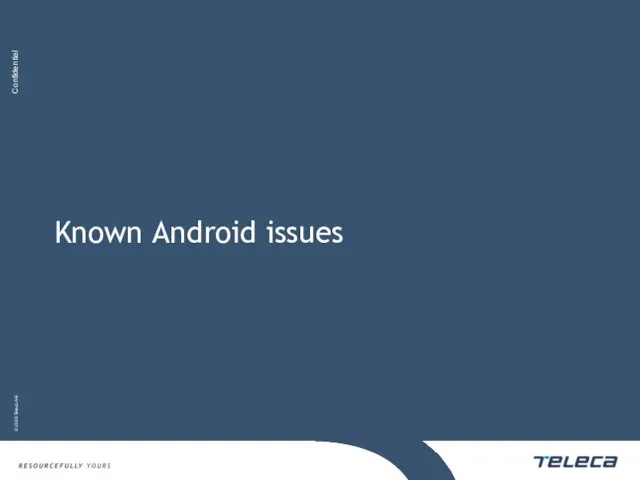
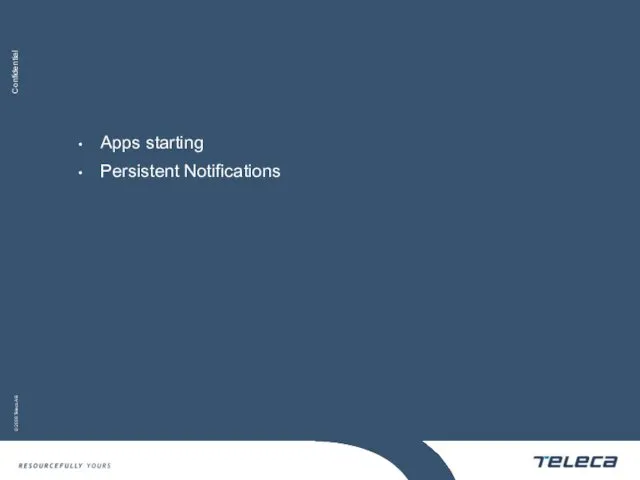
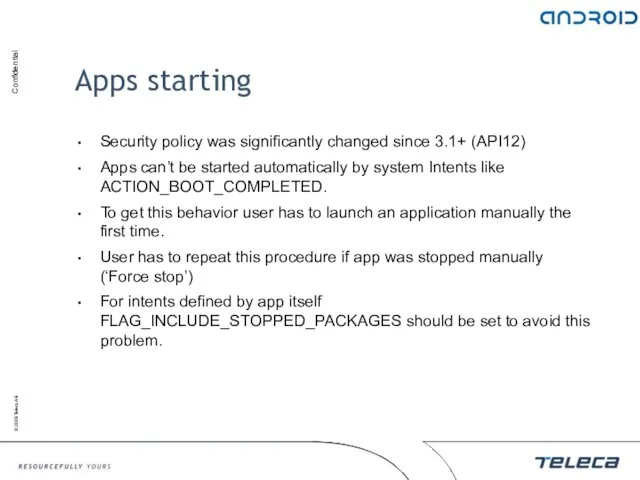
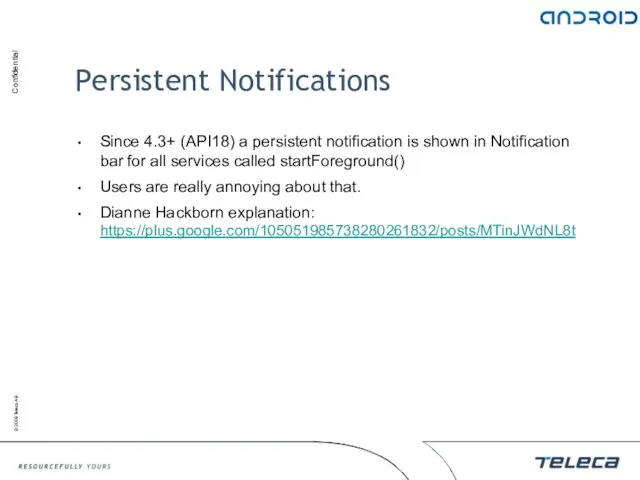
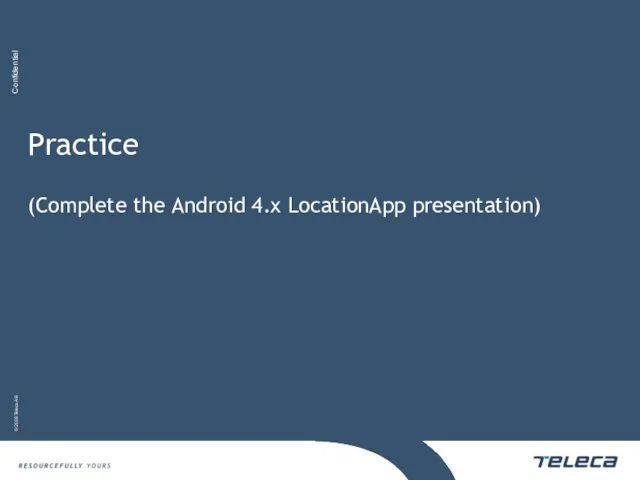
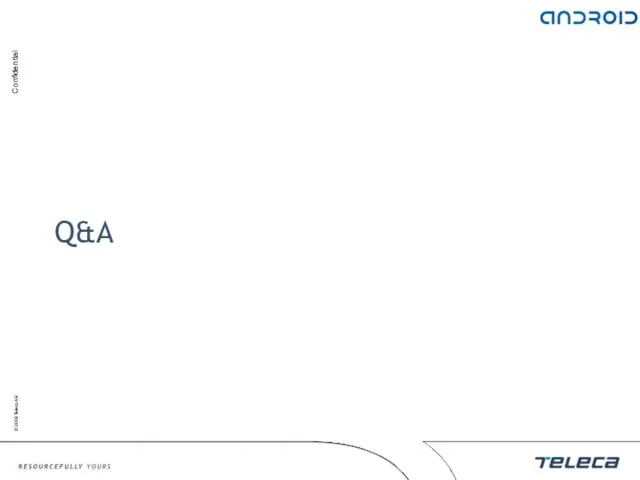
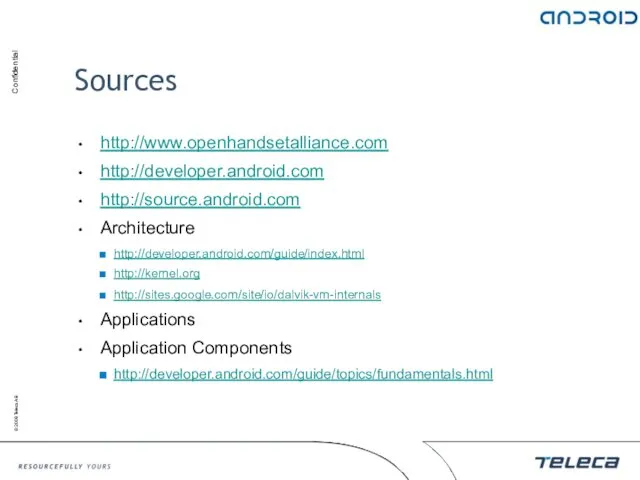
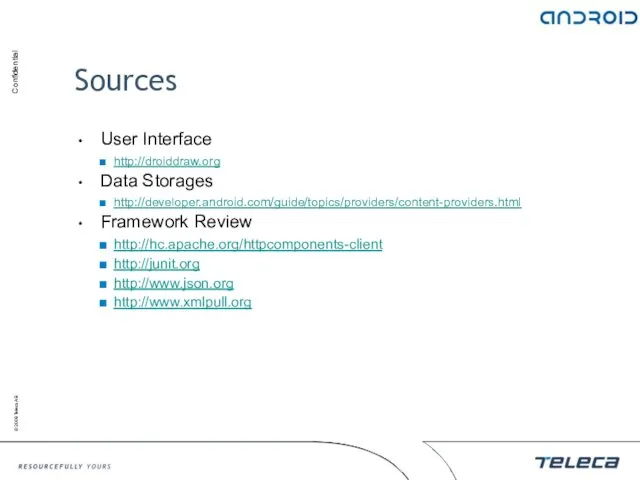
 Создание и форматирование таблиц в Microsoft Word
Создание и форматирование таблиц в Microsoft Word Интересные факты в информатике
Интересные факты в информатике Ссылочные Биржи
Ссылочные Биржи Игра сто к одному. Информатика и информация
Игра сто к одному. Информатика и информация Моделирование и анализ бизнес-процессов. Нотация IDEF0
Моделирование и анализ бизнес-процессов. Нотация IDEF0 Формирование изображения на экране монитора. Компьютерное представление цвета
Формирование изображения на экране монитора. Компьютерное представление цвета Настройка службы DHCP SERVER
Настройка службы DHCP SERVER Что такое дата-журналистика и почему ей стоит заняться уже сейчас
Что такое дата-журналистика и почему ей стоит заняться уже сейчас Презентация 7 класс Типы таблиц
Презентация 7 класс Типы таблиц Информация и подходы к ее количественной оценке
Информация и подходы к ее количественной оценке СММП: вбудовані системи
СММП: вбудовані системи SmartClub - скрытые угрозы
SmartClub - скрытые угрозы Знакомство с операционной системой MAC OS
Знакомство с операционной системой MAC OS Всемирная паутина, как информационное хранилище
Всемирная паутина, как информационное хранилище Презентация Лекция по теме Компьютерные коммуникации. Добрый день!
Презентация Лекция по теме Компьютерные коммуникации. Добрый день! презентация к Уроку Архитектура ЭВМ
презентация к Уроку Архитектура ЭВМ Познавательная игра – викторина История Великой Отечественной войны
Познавательная игра – викторина История Великой Отечественной войны Практическая работа в GIMP. Силуэты.
Практическая работа в GIMP. Силуэты. Компьютерная графика
Компьютерная графика Військова частина. Введення ПС “Русло”
Військова частина. Введення ПС “Русло” Файлы и файловая система. Программное обеспечение
Файлы и файловая система. Программное обеспечение Определение количества информации
Определение количества информации Основы геоинформатики и ГИС-технологий
Основы геоинформатики и ГИС-технологий Алгоритм и его формальное исполнение. Виды алгоритмов
Алгоритм и его формальное исполнение. Виды алгоритмов Программирование на языке Python (часть 2)
Программирование на языке Python (часть 2) Информационный калейдоскоп.
Информационный калейдоскоп. Автоматизация приема заявок на ремонт и модернизацию ПК ООО Джет г. Гродно
Автоматизация приема заявок на ремонт и модернизацию ПК ООО Джет г. Гродно Сервисы сети Интернет
Сервисы сети Интернет